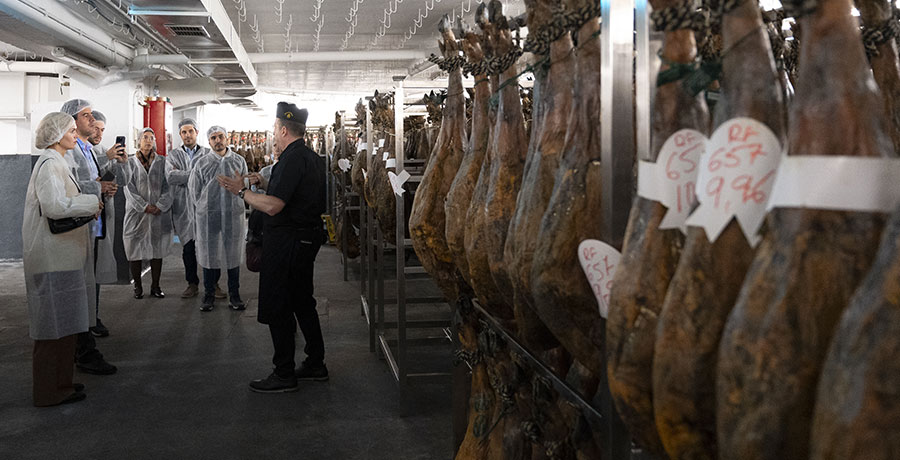Blog
The curing process of Iberian Ham: Art and Tradition

What is the Curing Process of Iberian Ham?
The curing process of Iberian ham is an artisanal method that transforms fresh meat into a product with unique flavor, texture, and aroma. Each stage is essential to ensure the quality and distinctive character of this gem of Spanish gastronomy.
Would you like to enjoy Iberian ham of exceptional quality? Visit our online store and bring home this gastronomic treasure.
Stages of the Curing Process
Salting
Salting is the first step in the ham curing process. The pieces are covered in sea salt to dehydrate and preserve the meat. This process lasts between 7 and 10 days, depending on the weight of the ham.
Washing and Resting
After salting, the hams are carefully washed with warm water to remove excess salt. They are then left to rest in refrigerated chambers for one to two months, allowing the salt to penetrate evenly and the meat to lose moisture.
Drying and Maturing
The hams are hung in natural drying rooms for 6 to 9 months. During this stage, airflow and climatic conditions promote dehydration and the development of the first characteristic aromas of Iberian ham.
Aging in the Cellar
The final stage takes place in cellars with controlled temperature and humidity. Over 12 to 48 months, the hams age slowly, acquiring the flavors and textures that make them a unique product.
Why is the Curing Process So Important?
The success of Iberian ham lies in the patience and care applied during its curing process. This artisanal method is key to producing a product that enriches Spanish gastronomy and delights palates worldwide.
We invite you to learn more about Iberian ham and its curing process at the Museo del Jamón in Madrid. Experience something truly unique!

